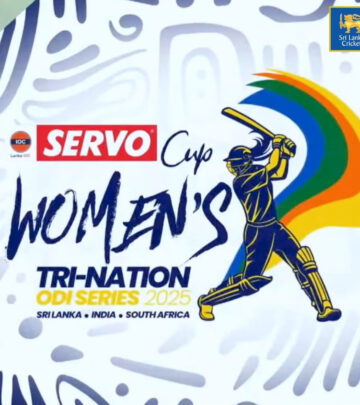South Africa Fields First In Servo Cup Women’s Tri-Nation
During the 5th match, South Africa gains an edge in the Servo Cup after electing to field.

Image: Instagram
In the Servo Cup Women’s Tri-Nation series, the 5th match has already set the stage for a competitive encounter as South Africa won the toss and elected to field first against India. This decision, noted in the official update with hashtag #SAvIND, could prove decisive as the South African bowlers look to take early control of the game.
The match unfolds at a time when every run and wicket counts in a tournament that has captivated women’s cricket fans around the globe. The toss decision by the South African team suggests a strategic plan to exploit the conditions early on, placing immediate pressure on the Indian batting lineup. While the fielding conditions and pitch specifics have not been detailed here, decisions like these are often aimed at unsettling the opposition and taking advantage of early game dynamics.
Match Tactics Revealed
South Africa’s move to field first aligns with a broader tactical approach commonly seen in international cricket. Electing to bowl at the start of the match might be a calculated decision to disrupt India’s planned innings. In many high-stakes scenarios, teams that choose to bowl first aim to restrict the opposition’s scoring and create a platform for a controlled chase later. Analysts in the cricket community have observed that winning the toss and opting to field can often be linked to conditions favoring swing or seam bowling, though the decision always involves weighing multiple factors.
The Servo Cup Women’s Tri-Nation series represents not only an opportunity for individual brilliance but also the strategic depth of teams with seasoned players. While South Africa’s decision to field is drawing immediate attention, it operates as a part of a larger tactical framework where match conditions, recent performance trends, and player readiness all come together. In tournaments like these, a single toss decision can sometimes reshape the game’s momentum.
Fan Reactions And Social Buzz
Social media channels have quickly lit up with reactions following the toss update. Fans on Instagram, as seen in the official post, are discussing the potential impact of South Africa’s choice on the match. The hashtag #SAvIND is trending among supporters who are eager to see how the game unfolds. The shared image—capturing an intense moment from the field—provides a visual insight into the pre-match atmosphere, underlining the excitement and high stakes of this international contest.
The energy around this match is not isolated, as the broader cricket community has recently witnessed similar thrilling encounters and strategic decisions across various international fixtures. In related updates, there have been highlights of outstanding performances by both emerging and established players, reflecting the dynamic nature of today’s women’s cricket. Although the focus today is on the South Africa vs India encounter, the interconnection between teams and tactics resonates with fans who follow tournaments from all angles.
A Broader Context In Women’s Cricket
While today’s spotlight is on South Africa and India, the global structure of women’s cricket continues to grow stronger. Women’s cricket tournaments now parallel many of the trends seen in men’s cricket, with emphasis on strategic planning, athletic grace, and the pressure of international competition. Data and historical performance tracking suggest that teams often make conservative choices when conditions are uncertain, leaning on experience to guide split-second decisions like the toss outcome.
In a broader regional context, developments in women’s cricket echo the strengths seen in other cricketing nations. For instance, while the official Sri Lanka national cricket team—whose historical background is detailed in reputable sources—continues to build a legacy in the men’s game, their administrative efforts also inspire growth in the women’s cricket arena. The integration of diverse strategies and best practices across national teams enriches the competitive spirit of tournaments like the Servo Cup.
The decision by the South African side to field first sets the tone for what many are calling a battle of strategies. Indian batters, now facing a fresh bowling attack intent on creating early breakthroughs, will need to adapt quickly. The match is expected to provide insights into how different national teams prepare for high-pressure innings and make tactical adjustments on the fly.
The Road Ahead
As the match progresses, spectators and analysts alike will be watching how quickly South Africa can leverage their fielding advantages. The game represents not only a contest of skills but also a test of mental fortitude and strategic foresight. With each team bringing its own strengths, the outcome of this match could have lasting implications for the remainder of the tournament.
In conclusion, the Servo Cup Women’s Tri-Nation match has already delivered an important narrative in its opening moments. South Africa’s decision to field first in a closely watched clash against India may well shape the flow of the game. As the match unfolds, the cricketing world eagerly awaits further developments that promise to add yet another chapter to this dynamic series.
Read full bio of Srijita De



















